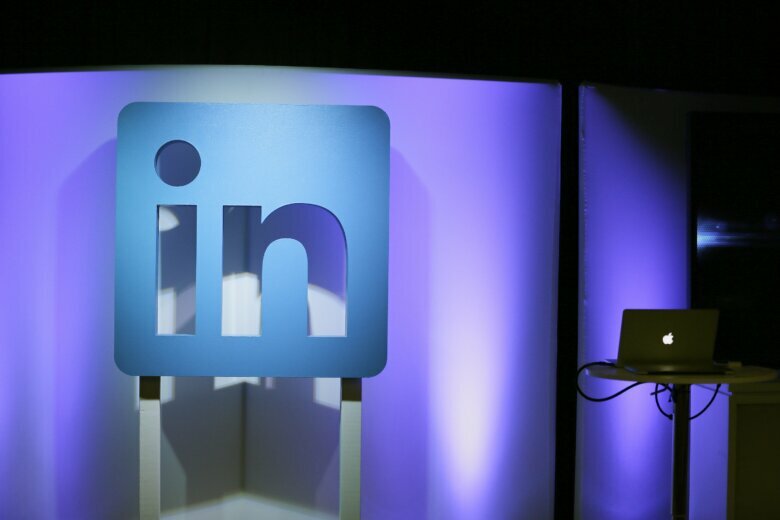
So you’ve got a LinkedIn profile, but you aren’t exactly sure how to find jobs on LinkedIn. You may be familiar with LinkedIn’s job board, but there are more ways to uncover job opportunities.
The following tips will help you discover new ways to search for jobs on LinkedIn.
— Use LinkedIn’s job board.
— Filter results by LinkedIn features.
— Search by skills.
— Search remote jobs.
— Search hashtags.
— Search posts.
— Search groups.
— Use your alumni network.
— Use the “Open to Work” feature.
— Use a professional profile photo.
— Craft a compelling “About” section.
— Understand skill endorsements and recommendations.
— Use keyword optimization.
— Consider LinkedIn Easy Apply.
LinkedIn is full of job opportunities. But simply having a profile on LinkedIn is not enough to make the most of this potential goldmine. To maximize your job search using LinkedIn, learn how to use all of its features to your advantage.
[Related:9 Ways to Be an Incredibly Likable Interviewee]
Use LinkedIn’s Job Board
When you search for a job using LinkedIn’s job board, you have several ways to filter the jobs you see. Before you make any adjustments the first time, scroll through the jobs to get a feel for the types of roles and employers listed.
Make note of the connections you have inside companies, how long ago the job was posted and how many people have applied. Focus on jobs that have recently been posted. The longer a job has been online, the more likely the employer has already selected their top candidates to interview.
Filter Results by LinkedIn Features
Within LinkedIn’s job search page, you can filter your search results by different LinkedIn features. One of the most valuable options is filtering jobs found in your network. This shows only the jobs where you have a LinkedIn connection. Reach out to your connections before you apply to learn more about the job opportunity.
You can also ask if your contact would be willing to refer you for the job. Referred candidates are more likely to be invited for an interview.
Search by Skills
Instead of searching for job titles, search by the skills you already have that you’d like in your next role.
First, identify a skill or a specific function or software that you’ve mastered and want to continue working with in your next job. Searching the skill will let you see the jobs available requiring that specific search query. For example, if you are in accounting and are looking for an entry-level accounting role, you may want to search for “reconciling invoices” or “Great Plains software” if you’re well-versed in those areas.
Search Remote Jobs
You may find more jobs by looking for remote jobs. Instead of entering your desired city or metropolitan area, type “remote” in the city, state or zip code box. If you want to find jobs that are in your city that offer remote working options, indicate the city and state and look for the “remote” filter in the menu bar under the search boxes. Selecting the remote filter with your city and state will show fewer results since it uses the geographic location of the company.
[Related:How to Write a Recommendation on LinkedIn]
Search Hashtags
Hashtags are used to tag posts and make them easier to discover. Many employees and recruiters will share job openings on LinkedIn and may even use specific hashtags.
Some hashtags used to indicate job postings are more general, such as #hiringnow, #nowhiring, #jobs, #applytoday or #joinourteam. Other hashtags are specific to jobs, skills or companies, such as #rubyonrails, #projectmanagerjobs or #lifeat(company name).
To search for hashtags on LinkedIn, go to the search box and enter a hashtag; you will see results from across LinkedIn. The posts are from people, companies and even posts inside public groups. When you find a hashtag you find helpful, click to follow it. When you follow hashtags, posts with that hashtag appear in your home news feed on LinkedIn. You can try searching Twitter and Instagram for these hashtags.
Search Posts
People share openings on LinkedIn but may not use hashtags. To find jobs on LinkedIn that don’t have a hashtag, search for “(job title) job.” For example: “vice president of sales job.” Then, select the “posts” filter. To further refine your search results, test filtering by industry, posts made by your first-level connections or the date it was posted.
Search Groups
LinkedIn Groups help people with similar professional interests gather online. You can search for industry groups, regional groups, alumni groups or even groups catering to specific types of roles. Look at the recent posts shared and the number of members to see if it is worth joining.
One secret benefit to joining a group is that you can invite almost any member to connect, even if you don’t have any mutual connections. This is one way to get in touch with company insiders or people in your profession and expand your network. These new connections may share job opportunities in the future.
Use Your Alumni Network
No matter when you graduated, alumni connections are a great way to connect with new people and possibly learn about jobs. If you haven’t tried the alumni tool, you may be surprised by how much information is available.
To access this tool from LinkedIn’s desktop site, search for the school you attended and filter by school. When you’ve found your school, look for the alumni menu on the sidebar. You can filter alumni by the cities they work in, the companies they work for or the type of role they hold. You can even filter by the years they attended or graduated from your school to find people you may actually know.
You can use the alumni tool to talk to people who can provide the inside scoop on what it’s like to work for a company. Or you could connect with alumni in a city you want to relocate to and have an instant network.
LinkedIn’s job board also shows you alumni who work at companies that are hiring when you look at a job posting. Investigate who the alumni are and reach out to get more information about the company before you apply for the job.
Use the ‘Open to Work’ Feature
What can you do to effortlessly get a recruiter’s attention? Turning on the Open to Work feature on your LinkedIn profile increases the likelihood of getting a message from a recruiter, according to LinkedIn.
This feature has public and private options. You can choose whether you want all LinkedIn members or only recruiters to see the green photo frame around your profile picture that says “#OpenToWork.” If you set it to “Recruiters Only,” only recruiters with LinkedIn’s recruiting software can see you are available, excluding those who work for your current company. If you are employed and looking, you don’t want to jeopardize your job by letting people know you are looking.
Rather than make recruiters or your connections guess what type of work you are interested in, complete all the sections in the “Open to Work” feature. For example, list all the job titles you are interested in, the cities where you want to work, the type of work — such as an internship or full-time job — and when you would be ready to start a new position. This is one more way you can inform recruiters and your network that you are in the market for a job.
Use a Professional Profile Photo
If you’re on LinkedIn and don’t have a profile picture, it’s time to change that. According to LinkedIn’s research, having a photo makes your profile 14 times more likely to be viewed by others.
If you don’t have the budget to get a headshot taken by a professional photographer, the camera on your smartphone will also do the trick.
“Have a friend take a photo of you in professional clothing and in good lighting using the portrait mode on your phone. Then, crop it so that the photo is from your upper torso up,” says Becca Carnahan, a career coach and founder of Next Chapter Careers.
And while a banner photo isn’t required, Carnahan believes it makes your profile more complete. “It’s an opportunity to create a billboard for yourself as a professional. What do you want someone to remember about you when they leave your profile? Using images, words or a combination of both, you can create a powerful banner photo that sets you apart,” she says.
For example, if you’re interested in becoming a solar project development engineer or an energy consultant, a banner photo focused on nature could be a good fit. Canva offers plenty of LinkedIn banner templates you can customize to fit your industry or professional focus.
[READ: How to Best Use Your LinkedIn Cover Photo]
Craft a Compelling ‘About’ Section
“LinkedIn isn’t just an online resume. It’s your professional narrative. Make it captivating, engaging and reflective of your aspirations,” says Ashley Samson, chief of staff at National Business Capital, a financial services company. Instead of copying your resume word for word, be creative and highlight what sets you apart from others in your field. Use this section to sell yourself and show your personality and passion for your work.
For instance, if you’re a user experience or user interface designer, Samson recommends wording your LinkedIn bio like this: “Passionate about merging design and technology to create seamless user experiences. Previous work includes collaborating with cross-functional teams to enhance customer engagement for global brands.”
Remember that while LinkedIn gives you a limit of up to 2,000 characters for your bio, only the first three lines are visible before a visitor has to click “See More.” So get straight to the point and avoid rambling about irrelevant information.
Understand Skill Endorsements and Recommendations
LinkedIn endorsements allow your connections to come to your profile and give their stamp of approval to your skills and qualifications. These endorsements from supervisors, co-workers or clients can add credibility to your profile and boost your professional reputation. Just like how Amazon customer five-star reviews can sway a buyer’s decision, your LinkedIn endorsements can make you stand out among other job applicants.
But how do you get these endorsements? A good way to start is by reaching out to people you’ve worked with and offering to reciprocate by writing a recommendation for them.
Be specific about the type of skill or work experience you would like to be endorsed for. If you receive an endorsement that doesn’t bring value to your LinkedIn presence, you can always adjust your LinkedIn settings to make the endorsement visible to only you.
Use Keyword Optimization
Using industry-specific keywords throughout your profile can increase your chances of being spotted by recruiters and potential employers.
“This includes speaking the language of your target industry and including keywords from your target roles. You want to include those relevant keywords throughout your profile, including in your headline, ‘about’ section and work experience,” says technology career coach Kyle Elliott. Don’t go overboard and list every keyword under the sun, though. Instead, strategically weave them in.
Here’s an example of what LinkedIn profile keyword optimization could look like:
— Headline. Instead of simply listing your current job title as “marketing manager,” enhance it with keywords such as “marketing manager | SEO and content strategy specialist | brand development expert.”
— “About” section. Include key phrases relevant to your industry. For example, “A dynamic marketing manager with a proven track record in developing SEO strategies, optimizing web content and spearheading successful brand development campaigns.”
— Experience and skills. Incorporate your chosen keywords into your job descriptions and list of skills. For example, under skills, you could list SEO, link-building, Google Analytics, content strategy, brand development and other skills.
LinkedIn Profile Don’ts
1. Don’t leave your profile incomplete. According to LinkedIn, profiles that are 100% completed are 40 times more likely to receive job opportunities through the platform.
2. Don’t use unprofessional language. LinkedIn is a professional platform, not a personal social media account, so be mindful of how you present yourself and interact with others.
3. Don’t neglect the summary section. Your LinkedIn bio is a chance to sell yourself. Make it captivating, clear and concise.
4. Don’t underestimate the importance of keywords. One of the key steps to boosting your LinkedIn presence is using the right keywords and knowing how to strategically incorporate them into your profile.
5. Don’t let your profile become stagnant. Regularly update your LinkedIn profile as you gain new skills or experiences.
Consider LinkedIn Easy Apply
The hard part isn’t how to find jobs on LinkedIn. It’s submitting your application that takes time and effort. Before you select Easy Apply and your LinkedIn profile gets sent to the recruiter, make time to thoroughly review the job posting.
Look at the requirements and make sure your profile addresses the necessary skills. In other words, did you integrate and mention those same skills in the various sections of your LinkedIn profile, such as the “About” section or the “Work,” “Experience” and Skills” sections? Have you researched the company and reached out to your connections inside the company?
If LinkedIn has indicated that one of your connections works for the company to which you’re applying, it’s a good idea to reach out to them to learn about the company and perhaps ask if they will refer you.
More from U.S. News
Phone Interview Questions to Prepare For
How to Master Situational and Behavioral Interview Questions
Vital Tips for an Effective Job Interview Strategy
How to Use LinkedIn to Find a Job originally appeared on usnews.com
Update 09/01/23: This story was published at an earlier date and has been updated with new information.








